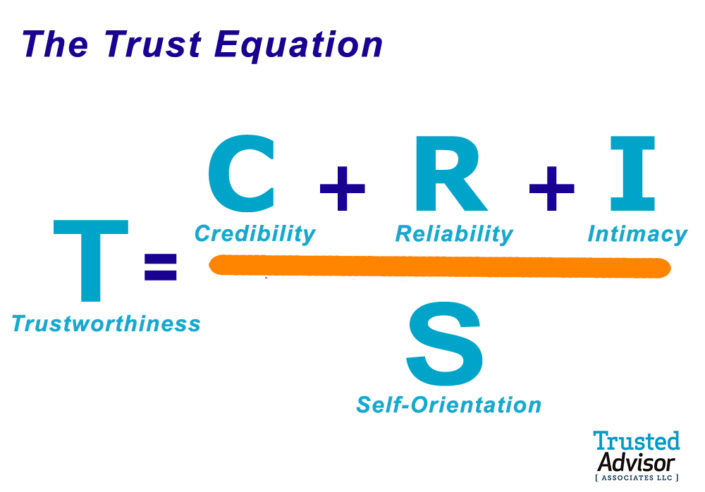
“Trust but verify.”
This quote made famous by Ronald Reagan when discussing nuclear disarmament. It raises the age-old question, is trust given or is it earned? In practice it is both. One person takes the risk of trusting someone else, while the other proves out whether they are trustworthy or not.
Charles H. Green co-wrote several books on this topic, and went on to develop a free online self-assessment that measures an individual’s “Trust Quotient”. By understanding the underlying factors, one can see what they can control to become more trustworthy. Let’s take a closer look at each of the elements and what they mean.
The factors of trustworthiness
The first three factors are additive. By increasing these in the eyes of others, the more trustworthy you become:
- C is for Credibility. This is about what someone says and if they are knowledgeable or believable on a subject.
- R is for Reliability. This is about someone who does what they say they will and if they are dependable.
- I is for Intimacy. This is about others feeling secure when entrusting someone with information.
The fourth factor, Self-orientation (S), is the limiting denominator in the equation. This reflects whether a person’s focus is more on others or themselves. When others perceive someone pursuing their own self-interests, the additive factors in trustworthiness diminish.
Broken trust
A person can develop all four of these factors. The more trustworthy they become, the more they are trusted. The opposite is also true. And once trust is broken, it can be difficult to overcome. It can lead the other party using the internet meme, “I’m a good enough person to forgive you, but not stupid enough to trust you again”. Saying ‘sorry’ may help gain forgiveness, but it takes a visible change in behaviors based on the four factors to build trust again.
Trust in a team
Building and maintaining trust in a team setting, especially virtually, is more challenging than one-on-one. There are a variety of different relationships moving simultaneously while the various trust factors for each person may not be visible to everyone in the same way. Factions may form in a team and individual members can even be ostracized. One way to help is to introduce the concept of the equation to the team as early on as possible. This is a key component in most of my workshops. Being able to talk about the concept of trust with a team and have them share their perspectives can already help increase the trustworthiness factor.
Do you have an experience you can share where trust was broken, and if it was ever repaired or not?
